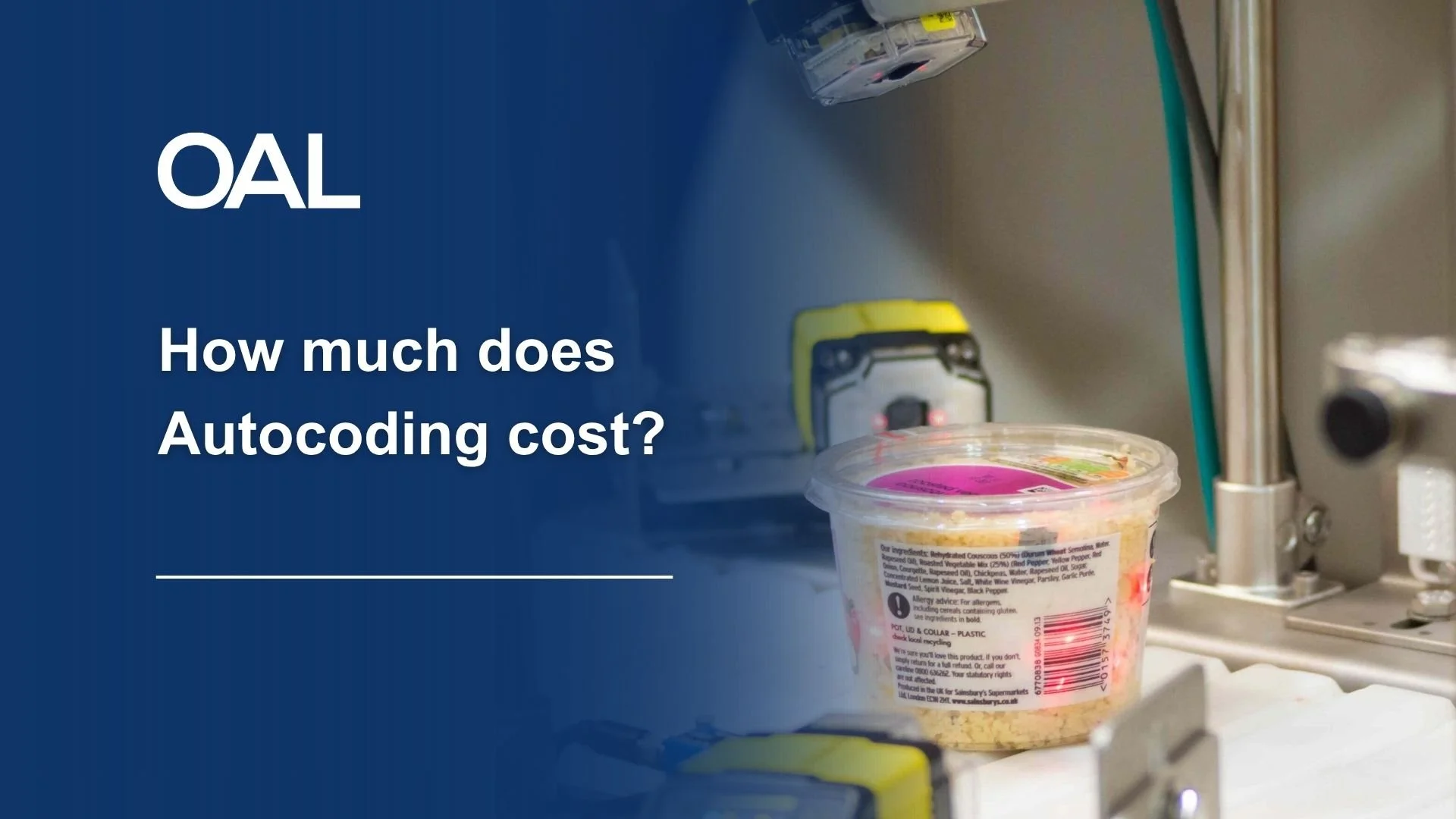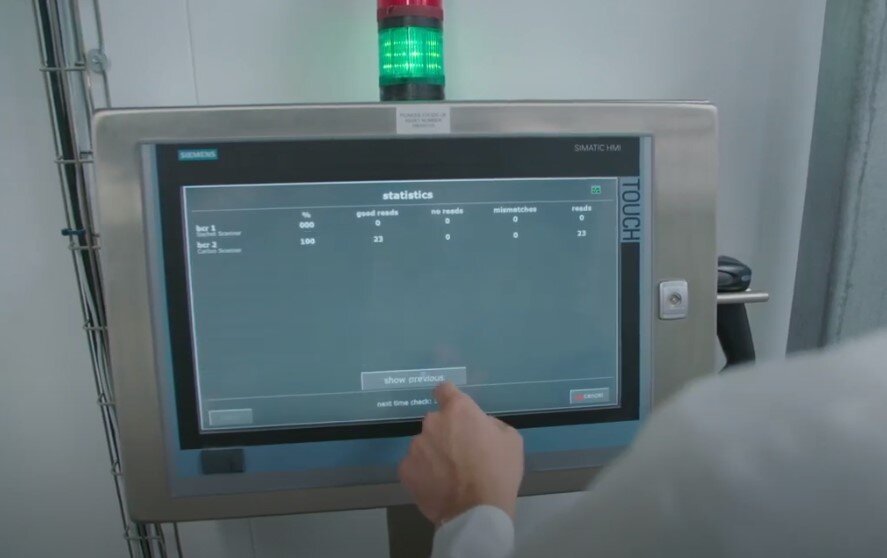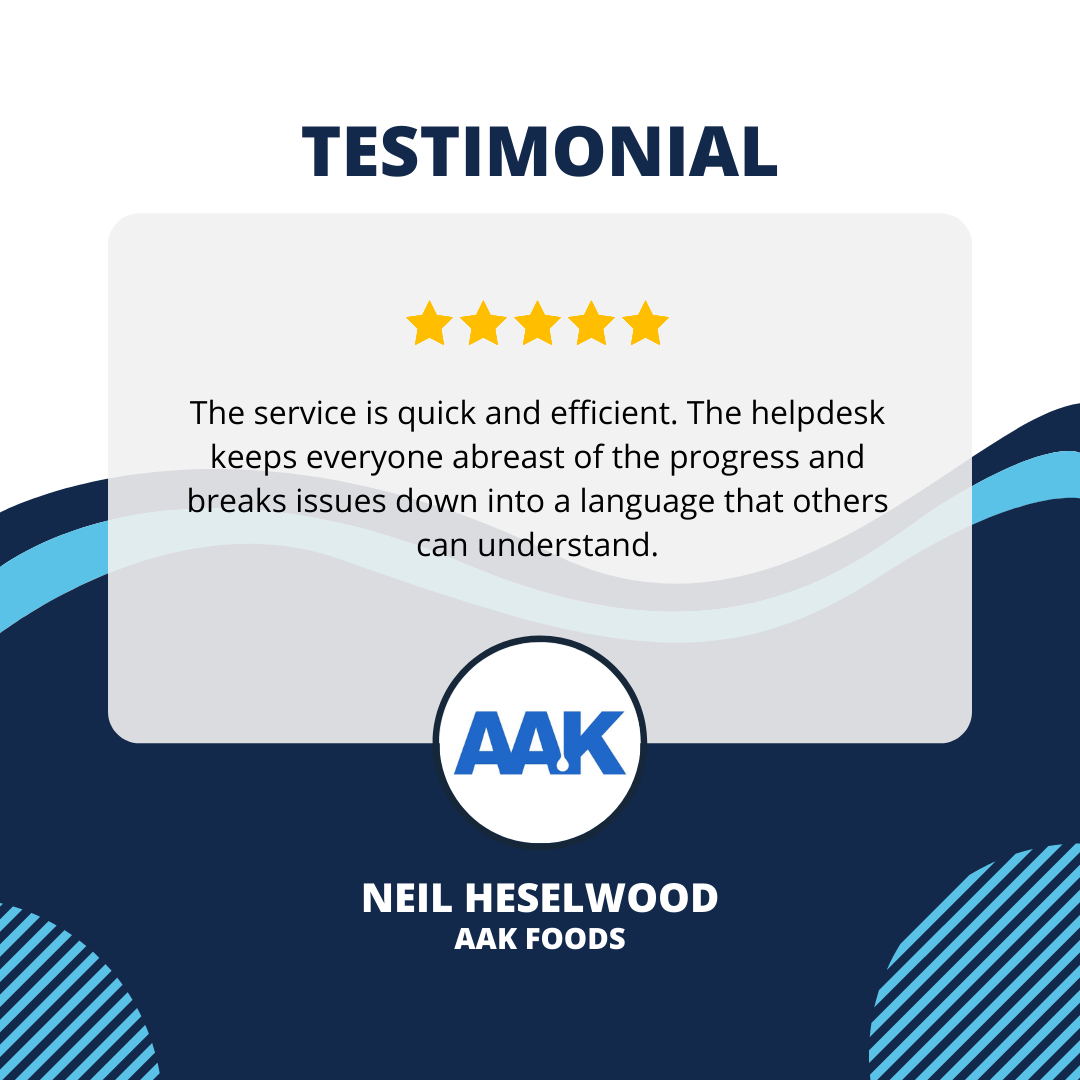How much does an Autocoding and packaging verification system cost?
Are you wondering how much it will cost to automate your label and date code verification (Autocoding)? Whether you're looking to improve compliance, reduce waste, or eliminate human error, this guide will help you understand the factors that affect pricing, so you can make the right investment for your business."
This is a great question, but, unfortunately, there is no black and white answer.
In this article, we will take you through the factors that affect the price of a label and date code verification system. Every business has its own requirements, so a single price can’t cover every packaging line scenario but by the end of this article you will have a solid understanding of the factors that drive cost.
Once we’ve covered standard functionality, we’ll review additional “added value” options.
“Standard functionality” is subjective. Our definition ensures compliance with all current retailer codes of practice but these requirements are constantly evolving. A current requirement in demand is date code verification, the ability to read the date code printed on the pack. As food manufacturers move towards unmanned packaging lines, advanced vision for online date code verification is becoming increasingly prevalent and will likely become “standard” over the next couple of years.
How much does Autocoding cost?
A standard label and date code verification system (Autocoding) can cost anywhere from £15,000 up to £40,000+ per packaging line.
Now, you’re probably asking yourself, “Why is there a big difference in price per line” Here’s why...
A standard label and date code verification system is made up of:
Hardware: Line terminals (IPCs, HMIs, PLCs), 1D/2D barcode scanners, vision cameras, sensors, brackets and accessories.
Labour: Installation, commissioning, software integration and training.
Software: The system software is typically modular and supplied on a one-off perpetual licence. Some vendors may offer software as a service (SAAS).
The complexity of a solution will dictate whether your system is leaning towards the low/high side of the cost spectrum. The key drivers of complexity are:
Packaging complexity. The number of packaging elements and SKUs.
System functionality: Packaging verification. Date code control. Vision. OEE. Paperless, to name a few.
System integration: A stand-alone system is the most cost-effective option however there are big benefits to integrating with existing business systems like your ERP, MES or other systems.
Standard functionality
What is the standard functionality for a label and date code verification system?
One of the main reasons for buying a label and date code verification system is compliance with a retailer’s code of practice.
Tesco, ASDA, Sainsbury, Waitrose, M&S, Morrisons, Lidl, Aldi, Co-op, Amazon all have slightly different technical requirements.
For the purpose of comparison, our definition of standard functionality ensures compliance with all codes of practice (but please get in touch with us if you need specific advice).
We’ve broken down the costs as follows alongside the requirements to satisfy retailer’s codes of practice:
Line terminals
Packaging verification – 1D/2D barcode scanners
Printer control
Software
Database manager
Line terminal
Reporting
Training and audits
Line terminals and HMIs
Example of a line terminal
Each packaging line will require a line terminal for the operator to select jobs and complete quality checks. The line terminal requires a hand scanner for completing checks and a login method e.g. RFID or ID card scan.
The line terminal can be wall-mounted or on a stainless-steel pedestal and requires a power and ethernet connection. The line terminal is normally located where operators currently conduct their paper-based checks.
Typically, each packaging line will have its own dedicated line terminal, but some may have a 2nd line terminal or use a mobile device for quality checks if there is a high-low care divide.
For compliance, the system must be suitable for use in a food packaging environment and the line terminal should be a minimum of IP65 with a colour touchscreen interface.
Hardware costs have been subject to fluctuation due to supply chain issues and double-digit percentage increases have been common. Provided good access, a single line terminal should be installed within half a day. For a budget cost, we would advise £9,000 per line terminal, installed and commissioned.
Packaging verification - 1D/2D barcode scanners
The system must automatically monitor all packaging throughout the production run to ensure the product is always packed in the correct packaging.
Systems will use inline barcode scanners to scan the barcodes on the packaging and verify it’s correct. The number of scanners required per line depends on:
The number of packaging elements. For instance, one scanner to read the lid and one to read the base label.
Artwork position of barcodes. The same packaging may have the barcode in a different position for different customers. Additional scanners may be required to “see” the barcode.
A quick google search reveals the cost of barcode scanners can vary from £800 to £7,000+ per scanner based on the functionality and capabilities they offer. To meet code of practice requirements and to minimise downtime, a high-performance scanner is required:
The system must show the number of ‘Good reads’, ‘No Reads’ and ‘Mismatches’ detected. The system should ensure no ‘Misreads’ or ‘Mismatches’ and be guaranteed for a Six Sigma Accuracy (99.99966%) level i.e. 3.4 defects per million opportunities (DPMO).
The scanner should also be capable of reading both conventional 1D linear barcodes (e.g. EAN13/8) as well as 2D Data matrix barcodes.
See: 1D and 2D barcodes - what’s the difference?
Aside from the hardware cost of a scanner, time is required for an engineer to install and commission each scanner. Again, the amount of time required is subject to a number of factors (access to the packaging line, mounting arrangement) but per scanner, engineering time will typically start from 4 hours. For a budget cost, we would advise £3,000 per scanner, installed and commissioned.
Printer control and monitoring
Printer control requires the system to automatically set up all online date coding or label printing devices from the database date code information.
Each printer manufacturer will charge a one-off licence fee to connect to each printer. Time is required for the commissioning of each printer. For a budget, we would advise £3,000 per printer, installed and commissioned.
The label and date code verification system will integrate with the printer company label creation software:
Domino printers will use QuickDesign.
ICE/Videojet/Linx printers will use Clarisoft
Markem printers will use COLOS.
Printer control removes the risk of operator error from entering the wrong date code for the printer to print but doesn’t guarantee the date code actually printed on the pack. Some printers now offer the ability to check the print ribbon to validate the print is applied. To fully close the loop, a picture can be taken of the printed date code on the pack and validated with vision/AI to check the printed date code is correct on the pack. See advanced vision below.
Software
The system software comprises:
Database manager. Software to view and manage the master product database. The database is installed on an existing SQL server managed by the manufacturer.
Line terminal. Software to run jobs and complete quality checks on the packaging line.
Reporting. Software to report on jobs, quality checks and traceability.
Typically, the software is modular and sold on a one-off perpetual licence as part of a turn-key solution. The software will require configuration, installation, commissioning and testing by trained engineers. The amount of engineering time will depend on the total number of devices and configurations required for each packaging line.
To ensure code of practice compliance the software must:
Have a central auditable database of packaging components and date coding rules for every product SKU, which resides on a central server in the system.
Create a central electronic audit log for all factory line events. The audit log must not be compromised by network or central server failure.
Manage system access with authorisation level based on user role. Hence, the requirement to login to the line terminal with RFID or a swipe card.
The system must have the ability to manage production exception conditions such as process or equipment concessions in an auditable way.
The system must have the ability to deploy the product data from the central database to a factory-based line terminal in such a way that the integrity and use of the system is not compromised by either network or central computer failure.
The system must be resilient against accidental or deliberate human error or tampering. Examples of the types of events that must be protected against include:
Disabling of packaging barcode scanning devices by unplugging, covering or misdirecting
Disabling of product detection PECs by unplugging, covering or misdirecting
Disconnection of the communication links between the system and date coders or labellers
Over-riding code set-up information from the system by direct entry/modification of the deployed date code at the coder screen
Training and audits
Users of the label and date code verification system will require training. Training is typically split between 3 groups:
Technical super-users: People responsible for entering and maintaining SKU information in the product database.
Engineering: People responsible for physical system maintenance.
Operators: People who use the system daily to run jobs on the packaging line.
The total amount of training will depend on the number of people in each category and your own production schedule. For a site with 10 packaging lines, we would expect a minimum of 5 days of on-site training to cover all 3 groups.
The majority of retailers also request the system is audited annually by the technology supplier to ensure the system if functioning correctly.
Additional system functionality
Label and date code verification systems typically offer additional functionality to help improve payback and offer a seamless user experience. Typical additional functionality includes:
Downtime recording and reporting – OEE. The same system infrastructure (line terminals, database etc.) can also record downtime and pack counts for OEE and other performance measures. Pack count sensors will need to be installed and software configured. There will likely be additional software licence costs. Prices will likely vary from £5,000 to £12,000 per packing line.
Date code verification (optical character verification). Read back the printed date code on the pack and verify it’s correct to the currently running job. Additional cameras will need to be installed and commissioned to take the pictures. A central high powered server is required to process the images. Prices will typically start from £12,000 per packaging line subject to specific requirements.
Integration of the system with planning/ERP/MES software. The master product database can be populated from your existing ERP or MES system.
Paperless quality assurance. Often paperless quality checks are included free of charge with a “standard” label and date code verification system.
Checkweigher and other device reporting.
Next steps
Bringing it all together, a budget-friendly turn-key price for a packaging line equipped with two scanners (top and base label) and one printer connection starts at around £18,000. Of course, several factors can influence this figure, either increasing or decreasing the cost. You could also unlock additional savings when purchasing multiple lines and software licences simultaneously.
To get an accurate idea of how much a label and date code verification (Autocoding) system will truly cost for your business, the best next step is to arrange a site visit. One of our experienced engineers will review your specific requirements and tailor a solution perfectly suited to your operations.
Ready to explore the possibilities? Book your site visit today and take the first step towards smarter, more efficient packaging!






